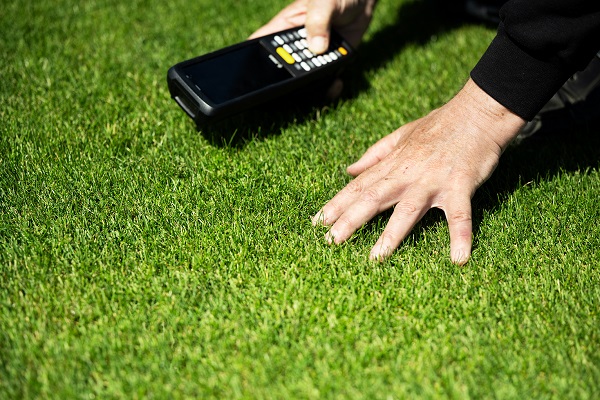The road to turf sustainability
01/02/2023

Well-managed sports pitches are one of the essentials to form the backdrop, when professional football or rugby teams are struggling to pull the longest straw in prestigious tournaments. The pitch performance must meet the requirements of the athletes – an even and uniform surface to play on, and excellence in wearability and resilience. Every time.
That is why a deep and thorough understanding of pitch management is vital for professional turf managers. They strive to create the perfect pitch for football players and sports fans to enjoy. They know that grass is a living organism that needs to be nursed to be ready for tackles and wear through the next match. If the pitch is challenged by too much pressure from wear and tear, the solution can be to start from scratch by a new seeding or by installing a new sod.
Being a living organism among millions in a grass pitch is not an easy life. The dense sward offers huge competition for light, food and air and creates a microclimate ideal for plant diseases.
Plant breeders in turf grass have for many years focused on helping customers to increase their outputs and playing hours, reduce their inputs, and simplify the management of their green spaces in a sustainable way. By increasing resilience to environmental- and climatic factors such as disease pressure and drought, we have managed to meet the requirements for maintenance in the future.
Some of the most creative minds in plant breeding have successfully been able to enhance the characteristics of turf perennial ryegrass by doubling the chromosomes from 2 to 4 sets. The tetraploid turf perennial ryegrasses have proven to be valuable ingredients in the perfect pitch.
These grasses, known by the seed industry as 4turf®, perform excellent with reduced inputs:
- Fast establishment, which outperforms annual bluegrass and other problem weeds resulting in less need for herbicides
- Strong root architecture, which enhances stress and drought tolerance and allows turf managers to limit pitch irrigation, – a key point in reducing the risks of disease attacks and the best way to reduce annual bluegrass
- Exceptional high disease resistance ensuring reduced chemical applications.
- Good winter hardiness ensuring reduced maintenance.
- Attractive deep green colour resulting in a beautiful turf.
- Enhanced nitrogen use efficiency resulting in less needs for fertiliser applications
Consequently, the 4turf® varieties are increasingly preferred and used by professional turf managers and sod producers in the grass industry. Both for performance and sustainability reasons.
